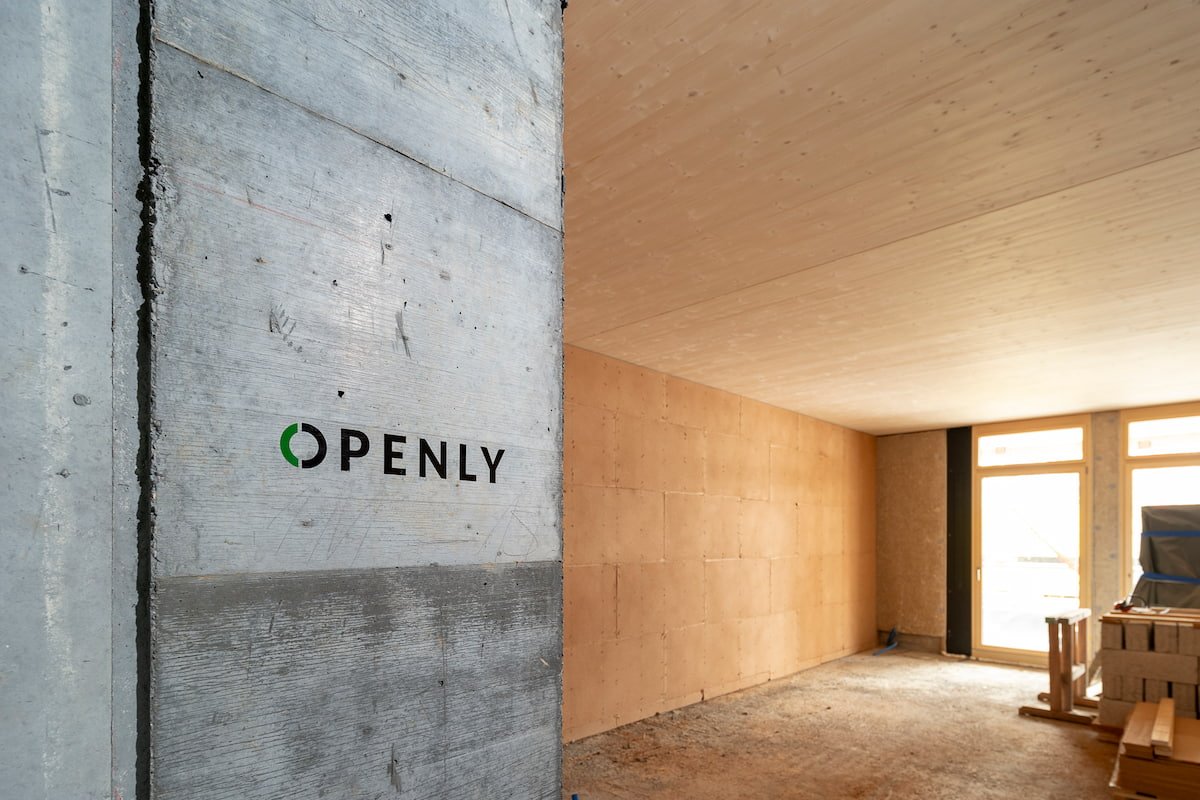We build differently - and therefore better.
Serial timber hybrid construction radically rethought
The OPENLY construction system uses biogenic building materials such as hemp and clay as well as standardized, calculable processes. We know the best solutions throughout Europe and consistently rely on decentralized prefabrication. Suitable for new residential and office buildings as well as renovations.
For investorsWe build PlusEnergy houses with a maximum of 6 kg CO2 per m2 at construction costs of 3,000 CHF/EUR per gross floor area. Benefit from short construction times, first-class building quality, extremely low operating costs and KfW-40-resp. Minergie P funding and SNBS Gold.
For residents: Openly buildings guarantee maximum living comfort thanks to the use of natural building materials.
Buildings as a carbon sink
Those who rely on Openly today not only build better. You are taking responsibility and securing your lead in tomorrow's market.
The Openly building system:
Low CO2 construction
Thanks to predominantly fossil-free, regional natural building materials, OPENLY engineered buildings are particularly low in CO2 ("gray energy") and already meet Denmark's 2029 target of a maximum of 6 kg CO2 per square meter. They also act as certified carbon sinks whose tradable CO2 certificates create financial incentives for the construction industry.
Zero emission in operation
OPENLYs achieve KfW 40 or PlusEnergy / Minergie P / SNBS Gold. This is achieved through excellent insulation values with CANCRET© hemp walls, a high storage mass with clay ceilings, reduced window areas and the Openly AIRBOX© ventilation system.
OPENLY buildings achieve up to 20% higher market value.
Our offer
Durability
with value retention
OPENLY plans buildings with a lifespan of 100 years and consistently follows the cradle-to-cradle principle (C2C). This turns buildings into valuable raw material depots instead of mountains of waste. OPENLY's components are plugged or screwed together, which ensures that the buildings can be used flexibly and that the individual components can be reused.
The building that got everything rolling
The "Valley Widnau" pilot project on Lake Constance was a key driver for the development and continuous improvement of our construction system. Many innovative approaches and techniques were tested and further developed here for the first time. As the largest hemp building in Europe, it set an important milestone for construction with biogenic building materials and confirmed our conviction in a consistently sustainable approach.
To put our vision into practice, we ourselves invested CHF 13 million in the pilot project with 19 residential units. Openlys are now being planned and implemented throughout Europe.








